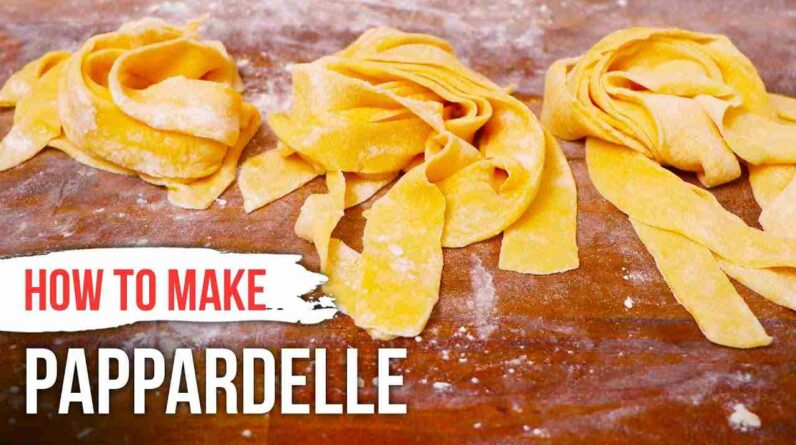Craving the taste of authentic Italian focaccia with its light and airy texture? Look no further, as we’ve got the answers right here! If you’ve ever wondered how to achieve that perfect balance of softness and chewiness, this article is for you. We’ll guide you through the essential steps and techniques to master the art of making Italian focaccia, so you can impress your friends and family with your baking skills. Get ready to embark on a delicious journey of dough, olive oil, and irresistible aromas!

Choosing the right ingredients
Flour selection
When it comes to making the perfect Italian focaccia, the choice of flour is crucial. We recommend using high-quality bread flour or all-purpose flour with a higher protein content. These flours have a higher gluten content, which helps create a light and airy texture in the finished product. Avoid using cake flour or low-protein flours, as they won’t provide enough structure to the dough.
Yeast options
Yeast is an essential ingredient in focaccia dough as it helps the dough rise and gives it a light and fluffy texture. There are a few options to choose from: active dry yeast, instant yeast, or fresh yeast. Active dry yeast needs to be activated in warm water before being added to the dough, while instant yeast can be mixed directly into the dry ingredients. Fresh yeast, although less common, can also be used and adds a distinct flavor to the focaccia. Experiment with different types to find your preferred choice.
Salt and sugar
Salt and sugar are not only for flavor but also play a vital role in the fermentation process and the overall texture of your focaccia. Salt helps to regulate the yeast’s activity, ensuring a slow and controlled rise, while sugar provides food for the yeast. Be sure to use fine-grain salt to ensure it dissolves evenly throughout the dough, and use sugar sparingly, as too much can lead to an overly sweet focaccia.
Quality olive oil
One of the key characteristics of Italian focaccia is its rich olive oil flavor. Be sure to use a good quality, extra virgin olive oil for both the dough and the topping. The olive oil adds a distinct taste and helps create a tender and moist crumb. Experiment with different types of olive oil to find one that you enjoy the most.
Preparation techniques
Mixing the dough
To start making your focaccia, begin by mixing all the dry ingredients together in a large bowl. This includes the flour, yeast, salt, and sugar. Make a well in the center and gradually add the warm water and olive oil. Using your hands or a wooden spoon, mix the ingredients together until a shaggy dough forms.
Kneading the dough
Once the ingredients are combined, it’s time to knead the dough. Turn the dough out onto a lightly floured surface and knead it for about 8-10 minutes. Kneading helps develop the gluten in the dough, which gives it structure and elasticity. Use the heel of your hand to push the dough away from you, then fold it back over itself and repeat. Keep kneading until the dough becomes smooth and elastic.
Resting and rising
After kneading, place the dough in a lightly oiled bowl, cover it with a clean kitchen towel, and let it rest for about 1-2 hours, or until it has doubled in size. This resting period allows the yeast to ferment and develop flavors in the dough. Be sure to place the bowl in a warm and draft-free area to promote proper rising.
Shaping the focaccia
Once the dough has risen, gently punch it down to release any air bubbles. Turn the dough out onto a lightly floured surface and shape it into a rectangle or round shape, depending on your preference. Use your fingertips to create dimples all over the surface of the dough, which helps create the characteristic texture of focaccia.

Flavorful toppings
Classic herb and olive oil
The classic topping for focaccia is a simple combination of olive oil, fresh herbs like rosemary or thyme, and coarse salt. Generously drizzle olive oil over the dough, allowing it to pool in the dimples. Sprinkle the herbs and salt evenly over the top, pressing them gently into the dough. This classic combination adds a burst of flavor to every bite of your focaccia.
Adding garlic and onions
For a more savory twist, consider adding minced garlic and thinly sliced onions to the classic herb and olive oil topping. Sauté the garlic and onions in a little bit of olive oil until they are soft and fragrant, then spread them evenly over the dough before baking. The caramelized onions and garlic infuse the focaccia with a delightful aroma and flavor.
Experimenting with different herbs and spices
Get creative with your focaccia toppings by experimenting with different combinations of herbs and spices. Try using fresh basil, oregano, or even a sprinkle of chili flakes for some heat. You can also add roasted cherry tomatoes, olives, or caramelized onions to add depth and complexity to the flavors.
Cheese variations
If you’re a cheese lover, adding different types of cheese to your focaccia can take it to the next level. Consider using grated Parmesan, mozzarella, or crumbled feta cheese as toppings. Sprinkle the cheese over the dough after applying the olive oil and herbs, so it has a chance to melt and meld with the other flavors while baking.
Proper baking methods
Preheating the oven
Before baking your focaccia, it’s important to preheat your oven to the correct temperature. A hot oven ensures that the dough starts baking immediately, creating a nice rise and texture. Preheat your oven to 450°F (230°C) or as directed by your recipe.
Choosing the right baking pan
The type of baking pan you use can affect the final texture of your focaccia. For a light and airy result, we recommend using a rimmed baking sheet or a shallow baking pan. A larger surface area allows the dough to spread out and rise properly. Grease the pan with some olive oil to prevent sticking and to add flavor to the bottom crust.
Adding steam
To achieve a crisp and golden crust, it’s important to create steam in the oven while baking. Place a shallow pan filled with water on the lower rack of the oven, or lightly spritz the dough with water before placing it in the oven. The steam helps prevent the dough from drying out too quickly, allowing it to rise properly while developing a beautiful crust.
Baking temperature and time
The baking temperature and time will depend on your specific recipe and the thickness of your focaccia. In general, a higher temperature, around 450°F (230°C), will help create a crisp exterior, while a longer baking time will result in a more chewy texture. Follow the instructions in your recipe, but keep an eye on the focaccia and adjust the baking time if needed to achieve your desired level of doneness.

Handling the dough correctly
Avoid overworking the dough
When it comes to working with focaccia dough, less is more. Overworking the dough can lead to a dense and tough final product. Once the ingredients are combined and the dough is kneaded, be gentle with it. Avoid excessive punching, stretching, or twisting, as this can cause the gluten to become overdeveloped. Handle the dough with care and let it rest and rise properly for the best results.
Proper stretching and folding
During the resting and rising periods, it’s important to perform a few rounds of stretching and folding. This technique helps strengthen the gluten network and creates a better texture in the final product. About every 30 minutes, gently stretch the dough out into a rectangle and fold it back onto itself. Repeat this process a few times, being careful not to deflate the dough completely.
Using fingertips to create dimples
Once the dough has been shaped and placed on the baking pan, use your fingertips to create dimples all over the surface. Gently press down on the dough, making indentations that will hold the toppings and add texture to the focaccia. Be careful not to press too hard and deflate the dough. The dimples will also help the oil and flavors to penetrate the dough while baking.
Monitoring dough consistency
Throughout the mixing, kneading, and resting process, it’s important to pay attention to the consistency of the dough. The ideal focaccia dough should be soft, smooth, and slightly sticky to the touch. If the dough feels too dry and stiff, add a little bit of warm water. On the other hand, if the dough is too wet and sticky, add a small amount of flour. Achieving the right consistency will help ensure a light and airy texture.
Understanding fermentation
The role of yeast in fermentation
Fermentation is a crucial step in the process of making focaccia. During fermentation, the yeast consumes the sugars in the dough and produces carbon dioxide gas, which creates air pockets and helps the dough rise. It’s important to let the dough ferment for a sufficient amount of time to allow the yeast to work its magic. Too short of a fermentation time can result in a dense and heavy focaccia.
Controlling proofing time
The proofing time, or the time it takes for the dough to rise, can vary depending on factors such as ambient temperature and the amount of yeast used. Generally, the dough should double in size during proofing. The temperature and humidity of your kitchen can affect the proofing time. If the room is cooler, it may take longer for the dough to rise. Keep an eye on the dough and let it rise until it has visibly expanded.
Creating a warm and moist environment
Yeast thrives in warm and moist conditions, so creating the right environment during proofing is essential. To ensure a successful rise, place the dough in a warm area of your kitchen, away from drafts. You can cover the bowl with a clean kitchen towel or use plastic wrap to trap moisture and create a humid environment. Some bakers like to place a bowl of warm water next to the dough to add moisture.
Monitoring dough expansion
While the dough is proofing, keep an eye on its expansion. It should visibly rise and double in size. However, be cautious not to let it rise for too long, as it can lead to over-proofing and a collapsed texture. If you’re uncertain about the proofing time, you can perform a simple test by gently pressing your finger into the dough. If the indentation remains, the dough is ready for the next step.

Techniques for achieving airiness
Whisking eggs for more air
If you prefer a slightly richer and more cake-like texture in your focaccia, you can incorporate eggs into the dough. Whisk the eggs separately before adding them to the other wet ingredients, as this helps incorporate air into the mixture. The added air will contribute to a lighter and airier crumb in the finished focaccia.
Using a stand mixer with a dough hook
If you have a stand mixer with a dough hook attachment, it can be a useful tool in achieving airiness in your focaccia dough. The dough hook helps knead the dough more efficiently, allowing for better gluten development and trapping more air in the dough. Start by mixing the ingredients on low speed until combined, then increase the speed slightly until the dough comes together.
Incorporating air during kneading
When kneading your focaccia dough by hand, there’s an opportunity to incorporate air into the dough during the process. As you push the dough away from you and fold it back over itself, imagine you are pushing air into the dough with each motion. Be gentle but deliberate in your kneading technique to ensure the air gets trapped within the dough.
Creating air pockets with the fingertips
In addition to dimpling the dough, you can also use your fingertips to create larger air pockets within the focaccia. After the dough has been dimpled, gently press down with your fingertips in certain areas to create larger, irregular pockets of air. These air pockets will give the focaccia a lighter and more airy texture when baked.
Achieving the right texture
Balancing hydration levels
The hydration level of your focaccia dough is crucial in achieving the right texture. Proper hydration refers to the ratio of water to flour in the dough. The dough should be slightly sticky and moist, but not overly wet. Add water gradually during mixing and kneading until the dough reaches the desired consistency. Finding the right balance will result in a tender and moist crumb.
Avoiding too much flour
When handling the dough, it’s important to avoid adding excessive amounts of flour. While it may seem tempting to add more flour to prevent sticking, this can lead to a denser and tougher final product. Instead, lightly flour your work surface and hands as needed, and rely on proper kneading and shaping techniques to prevent sticking. A slightly sticky dough will result in a lighter and airier focaccia.
Folding and shaping for texture
During the resting and rising periods, the technique of folding the dough contributes to creating a desirable texture. As mentioned earlier, gently stretch the dough into a rectangle and fold it back onto itself. This process helps build layers of gluten, which will contribute to a light and airy texture in the finished focaccia. Be mindful not to press down too hard and deflate the dough while folding.
Monitoring internal temperature
While baking, the internal temperature of the focaccia can give you an indication of its doneness and texture. A well-baked focaccia should have an internal temperature of around 200°F (93°C). Use an instant-read thermometer to check the temperature by inserting it into the center of the bread. If the temperature is below the recommended range, continue baking for a few more minutes until the desired temperature is reached.

Tips for successful proofing
Choosing the right location for proofing
To ensure successful proofing, choose a warm and draft-free location in your kitchen. The ideal temperature for proofing is around 75-80°F (24-27°C). If your kitchen is cooler, you can place the dough near a warm oven, on top of the stovetop, or even in a closed microwave with a warm cup of water. These methods help create a consistent and warm environment for the yeast to thrive.
Covering the dough properly
Covering the dough during proofing is essential to prevent it from forming a dry crust and to retain moisture. Use a clean kitchen towel or plastic wrap to cover the bowl or container where the dough is resting. Ensure that it is tightly sealed to create a moist environment. However, be careful not to press the covering too tightly, as the dough needs room to rise and expand.
Using the fridge for slow fermentation
If you prefer a slower fermentation process, you can let your focaccia dough proof in the refrigerator overnight. This technique, known as cold proofing, allows the flavors to develop more slowly and can result in a more complex and richer taste. After the initial rise, place the covered dough in the fridge for 8-12 hours. When ready to bake, let the dough come to room temperature before shaping and baking.
Testing dough readiness
To determine if your dough is ready for baking, there are a few simple tests you can perform. Gently press your finger into the dough, and if the indentation springs back slowly, the dough is properly proofed. If the dough springs back quickly, it needs more time to rise. Additionally, the dough should look puffy and expanded, with visible air bubbles on the surface. Trust your instincts and visual cues when deciding if the dough is ready or needs more time.
Troubleshooting common issues
Dough not rising enough
If your focaccia dough is not rising as much as you’d like, there are a few potential culprits. First, check the temperature of your proofing environment. If it’s too cool, the yeast may be sluggish and slow to ferment. Try placing the dough in a slightly warmer spot, or extend the proofing time. It’s also possible that the yeast you used is expired or inactive. Double-check the expiration date and consider using fresh yeast if needed.
Lack of airiness in the final product
If your focaccia lacks the desired airiness in its texture, a few factors may be at play. Overworking the dough during kneading or excessive handling can lead to a denser result. Be mindful of your kneading technique, and avoid excessive stretching or deflating the dough during shaping. Additionally, ensure that the dough has had sufficient rising and proofing time. Insufficient fermentation can result in a more compact crumb.
Crust being too dense
A dense crust on your focaccia may be caused by inadequate steam during baking or overbaking the bread. Ensure that you’re creating enough steam in the oven, either by placing a pan of water or lightly spritzing the dough with water before baking. The steam helps the dough rise and develop a lighter texture. Additionally, keep an eye on your baking time and temperature to prevent overbaking, as a prolonged baking time can lead to a tougher crust.
Controlling excess moisture
Excess moisture can make the crust of your focaccia soggy and unappetizing. To prevent this, avoid adding too much moisture during proofing or when applying toppings. During proofing, ensure that the dough is covered properly to retain moisture but not create excessive humidity. When applying toppings, drizzle olive oil and other wet ingredients sparingly and evenly. Avoid applying toppings too close to the edges, as they can contribute to excess moisture and a soggy crust.
Mastering the art of making light and airy Italian focaccia takes practice and attention to detail. From choosing the right ingredients to understanding fermentation and proper baking techniques, each step plays a crucial role in achieving the perfect texture and flavor. Experiment with different toppings and techniques to make your focaccia uniquely delicious. With time and experience, you’ll become a pro at creating this classic Italian bread. So grab your apron, roll up your sleeves, and embark on a tasty journey of focaccia-making success!










